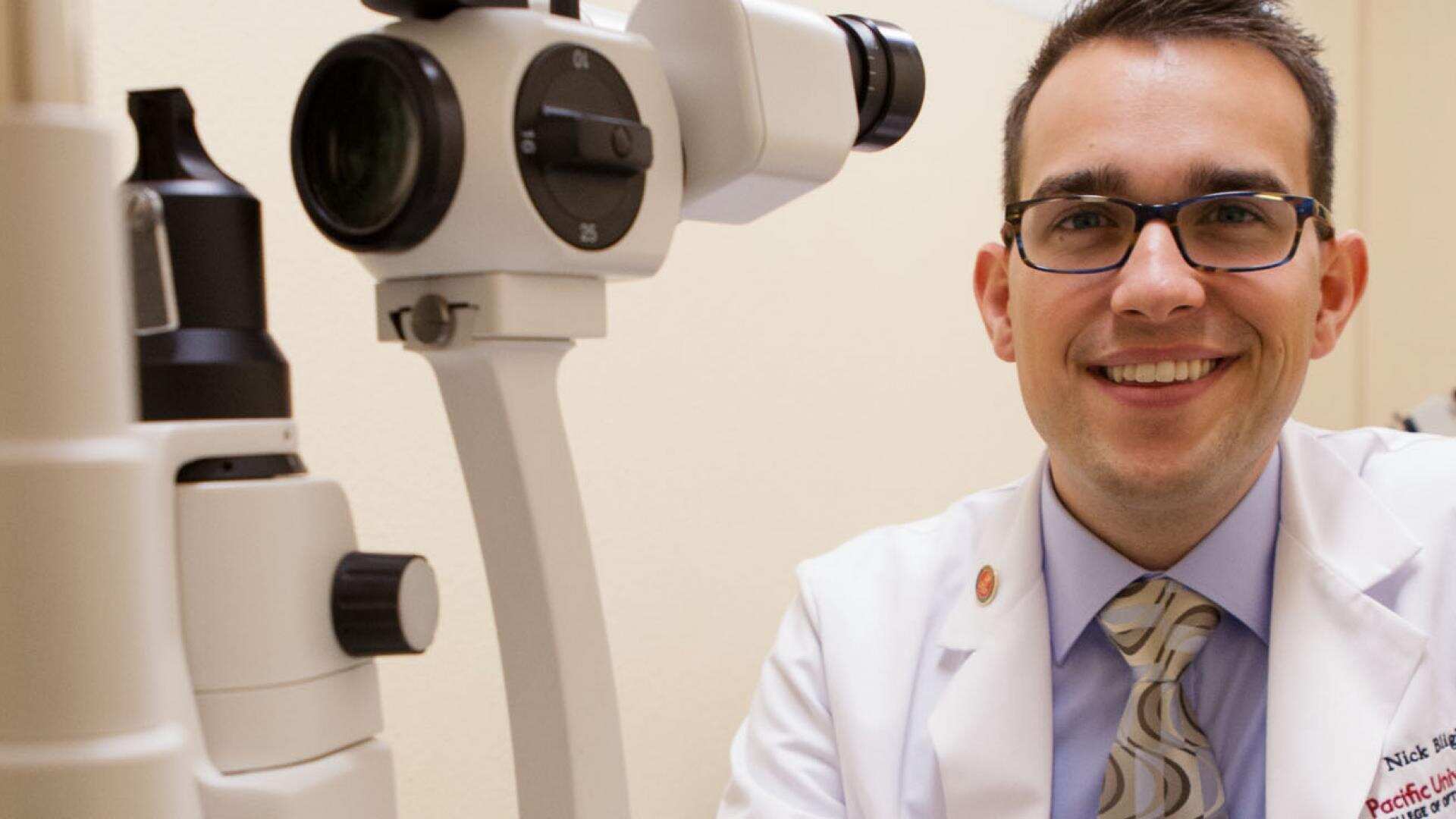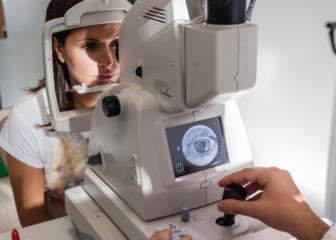Leading Reasons to Visit an Optometrist Chino for Your Eye Health
Leading Reasons to Visit an Optometrist Chino for Your Eye Health
Blog Article
Discovering the most up to date Technical Improvements in Optometry and What They Mean for Eye Doctors
In the ever-evolving area of optometry, recent technological innovations are reshaping just how specialists come close to eye care. From the precision of Optical Coherence Tomography to the nuanced understandings used by AI-driven analysis tools, these developments are setting brand-new criteria in individual evaluation and therapy. Teleoptometry is poised to redefine access, ensuring that experience transcends geographical restrictions. As these improvements permeate the technique, optometrists are encountered with the difficulty of welcoming these tools to boost person outcomes. The inquiry remains: just how will these technological changes redefine the functions and obligations within the career?
Technologies in Diagnostic Equipment
Advancing the area of optometry, innovations in diagnostic tools have actually changed the method eye care experts analyze and identify ocular problems and aesthetic problems. The past decade has witnessed considerable technological innovations, enabling more extensive and accurate evaluations. Optical Coherence Tomography (OCT), for instance, offers high-resolution cross-sectional pictures of the retina, permitting the early detection of illness such as glaucoma and age-related macular deterioration. This non-invasive imaging strategy has actually come to be important in contemporary optometric technique.
One more key development is the introduction of innovative corneal topography systems, which map the surface curvature of the cornea with accuracy. These devices are particularly advantageous for suitable contact lenses and identifying corneal problems. Additionally, digital retinal imaging has changed typical ophthalmoscopy, supplying in-depth, scenic sights of the retina that assist in comprehensive aesthetic evaluations.
The advancement of wavefront aberrometry has also been crucial, making it possible for the analysis of refractive errors with unparalleled precision (Eye Doctor Optometrist). This innovation aids in customizing rehabilitative lenses and improving medical results for refractive surgical procedures. Jointly, these analysis innovations encourage optometrists to provide exceptional person care, guaranteeing early intervention and customized treatment strategies, eventually boosting aesthetic health and wellness outcomes
AI in Person Administration
Building on the structure of sophisticated analysis devices, the incorporation of synthetic knowledge (AI) in client management stands for a transformative jump for optometry. AI systems are progressively used to boost efficiency, precision, and personalization in person treatment.
In addition, AI-driven systems assist in structured client communications and management procedures. Automated organizing, online consultations, and customized follow-up plans not only boost individual contentment yet also enhance time monitoring for experts. These systems can triage clients based on the urgency of their conditions, ensuring that those in vital requirement obtain punctual attention.
In addition, AI boosts decision-making by providing optometrists with evidence-based suggestions and therapy paths. By integrating information from digital health and wellness records, AI devices use insights that educate professional choices, reducing the danger of mistakes and improving person end results. As AI proceeds to develop, its function in client management will likely increase, improving the landscape of optometric care.
Breakthroughs in Retinal Imaging
In the realm of optometry, retinal imaging has actually experienced amazing technical developments that are improving diagnostic abilities and individual care. Advancements such as Optical Comprehensibility Tomography (OCT) and fundus photography have reinvented exactly how eye doctors evaluate the retina and visualize. OCT, in certain, provides high-resolution, cross-sectional images of the retina, enabling the in-depth exam of its layers. This capability is indispensable for early discovery and administration that site of problems like glaucoma, diabetic retinopathy, and age-related macular deterioration.
Enhanced imaging techniques like OCT angiography are additional refining analysis accuracy. Optometrist Chino. Such advancements promote the recognition look at this now of minute retinal adjustments that might indicate condition progression.
In addition, improvements in man-made knowledge are augmenting retinal imaging by allowing automatic analysis of large datasets. These systems help eye doctors in determining patterns a measure of pathology, thereby improving diagnostic accuracy and effectiveness. Jointly, these technologies are transforming retinal imaging right into a cornerstone of modern eye care, boosting results and expanding therapeutic possibilities.
Teleoptometry's Growing Role
Teleoptometry is progressively ending up being an essential part of eye care, driven by innovations in electronic interaction and analysis devices. As optometry embraces digital transformation, teleoptometry facilitates remote examinations, permitting eye doctors to expand their solutions past conventional boundaries. This is especially advantageous in country and underserved locations where access to specialized eye care is typically restricted. By leveraging high-resolution video conferencing and advanced retinal imaging, optometrists can carry out extensive eye exams from afar, ensuring timely diagnosis and treatment.
The assimilation of man-made intelligence (AI) further boosts teleoptometry, allowing the evaluation of visual information and aiding in the discovery of ocular conditions such as glaucoma and diabetic retinopathy. AI-powered formulas can rapidly interpret intricate imaging data, giving optometrists with valuable understandings that bolster professional decision-making.
Furthermore, teleoptometry supports continuity of treatment through smooth assimilation with digital health documents (EHRs), enabling eye doctors to preserve thorough individual histories. This makes certain that clients obtain regular and individualized treatment also when talking to various practitioners.
Despite these benefits, challenges continue to be, including making certain data safety and managing individual assumptions. Teleoptometry represents a significant stride towards more easily accessible, reliable, and patient-centered eye treatment. As modern technology advances, its role is poised to expand even more.

Future Fads in Eye Treatment
A myriad of ingenious patterns is set to reshape the future of eye care, driven by technical innovations and the advancing needs of clients. One significant pattern is the integration of expert system (AI) in diagnostics, which assures to boost the precision and effectiveness of eye evaluations. AI formulas can examine large amounts of information from retinal photos, potentially discovering conditions like diabetic retinopathy and glaucoma earlier than typical techniques.
Furthermore, customized medicine is gaining grip in optometry, with genetic screening educating personalized treatment strategies. This method aims to maximize individual outcomes by customizing interventions to specific genetic profiles. Wearable modern technology, such as clever contact lenses, is additionally coming up, offering real-time tracking of intraocular pressure or sugar levels, therefore offering continual insights right into systemic and eye health.
The fostering of augmented truth (AR) and virtual truth (VR) in training and patient education is an additional emerging other fad. These modern technologies provide immersive experiences that can enhance understanding and abilities both for patients and optometrists. As these fads evolve, eye doctors should remain abreast of technical developments to give innovative care, making certain enhanced client results and contentment in the vibrant landscape of eye treatment.
Conclusion

Collectively, these diagnostic developments equip optometrists to deliver exceptional patient treatment, making certain very early treatment and customized treatment approaches, ultimately boosting aesthetic wellness outcomes.

As these modern technologies continue to advance, eye doctors have to adjust and incorporate them into practice, eventually maximizing operations performance and elevating the criterion of eye care provided to people.
Report this page